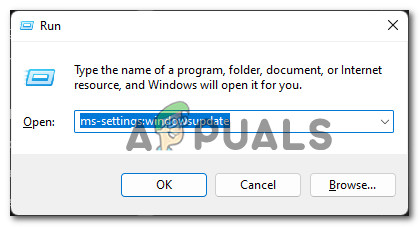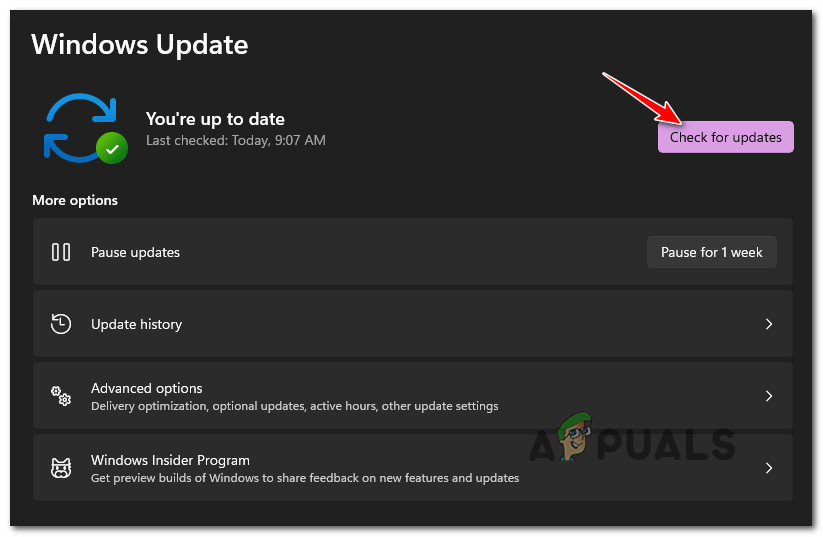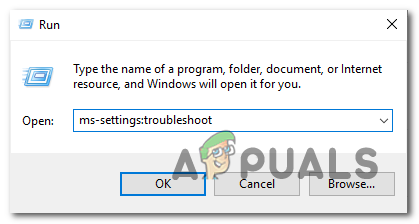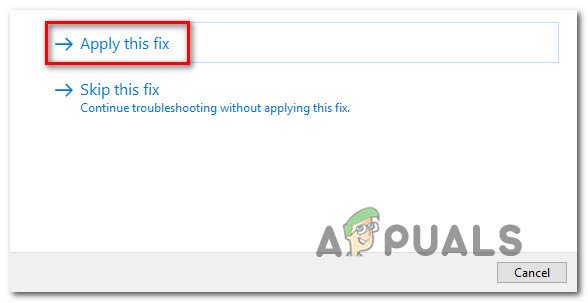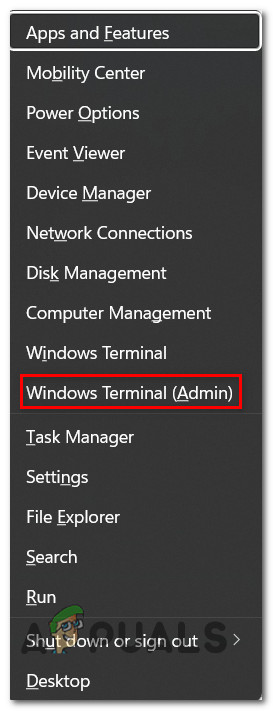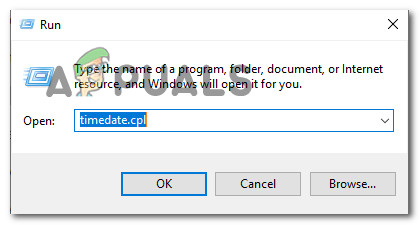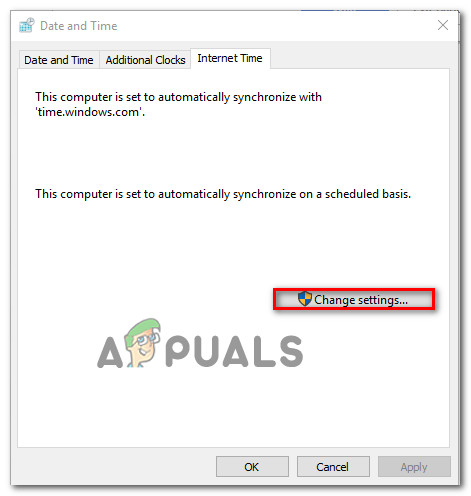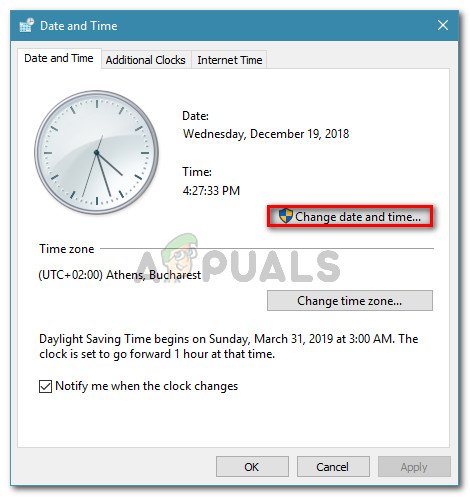After investigating this particular issue thoroughly, it turns out that there are certain common scenarios that will produce this error on Windows 11. Here’s a list of potential culprits that might be responsible for this error code: Now that you are familiar with every scenario that could potentially trigger this behavior on Windows 11, let’s get to the troubleshooting part. Follow the methods below for step-by-step instructions on fixing this issue. We got these fixes from other users confirming their effectiveness on the interwebs.
Install every pending Windows 11 Update
Keep in mind that Microsoft has already released hotfixes for this particular issue a couple of times in the past. As of now, the new Microsoft Store is still in preview mode on Windows 11, so glitches like this are to be expected. However, if you have pending updates waiting to be installed, it’s possible that the hotfix for this particular issue is waiting to be installed. So before doing anything else, go over to the Windows Update interface and ensure that every pending update (especially cumulative & feature updates) is installed. If Microsoft has just released a hotfix for this particular issue, installing every pending update should resolve the issue automatically. In case you find yourself in this particular scenario, follow the instructions below to install every pending Windows Update on Windows 11: In case the Microsoft Store component still crashes when you try to access a dedicated listing, move down to the next potential fix below.
Reset the Windows Store Cache
Badly cached data is probably the most common culprit that is known to cause this sort of behavior with the Microsoft Store on Windows 11. And even though cached files are very important for your Microsoft Store installation (they boost the response times and overall performance), removing them will not produce any underlying issue with the store component – after all, you are not able to use Windows Store properly anyways if you’re encountering this issue. Fortunately, you won’t be required to do this manually – You can simply use a troubleshooting tool called WSReset.exe to reset and clear the Windows Store without changing the account settings or deleting the installed apps. All you need to do is run this tool in an environment with administrative privileges and all the corrupted cached data that might be affecting the behavior of the Windows Store should be cleared. Follow the instructions below to reset the Windows Store cache via the WSreset.exe utility: In case the Microsoft Store utility still crashes when you open a dedicated app or game listing, move down to the next potential fix below.
Running the Windows Apps Troubleshooter
Keep in mind that all native applications that are running on UWP (Univeral Windows Platform) have a set of common dependencies that they share with the main store component (Microsoft Store). Under certain situations (after a bad update, after some type of file corruption), you can expect these shared dependencies to become corrupted and affect the app retrieval process – in scenarios like this one, the best course of action is to run the Windows Apps Troubleshooter and allow the automated repair component to take care of the issue. Note: The Windows Apps Troubleshooter is a repair component that is packed to the brim with automated repair strategies that can be applied if a recognizable scenario is discovered. If you haven’t tried this operation yet, follow the instructions below to run the Windows App Troubleshooter and apply the recommended fix to repair every shared dependency: In case the same kind of issue is still occurring and you’re still unable to open dedicated Windows Store listings for apps or games, move down to the next potential fix below.
Reinstall the Windows Store app package
In certain situations, you can expect this issue to occur due to an App package issue that affects the entire fleet of UWP applications. Situations like this one cannot typically be resolved by simply resetting the main Store component from the UI menu of Windows 11. If you find yourself in this scenario, the best course of action is to run a command (with admin access) that’s capable of removing the Microsoft Store app package from every account and force the package to clean re-install. This can be achieved by using a custom Get-AppxPackage command in an elevated Powershell window. Other users dealing with a similar issue have confirmed that the problem was resolved entirely after reinstalling the Windows Store app package via the Windows Terminal app. To deploy the same kind of fix, follow the instructions below: If the same kind of issue is still occurring, move down to the next potential fix.
Change Date and Time to correct values
If none of the methods above have proven to be effective in your case, the final thing that you should investigate is your system clock. As it turns out, if the time and date values of your local system are different than the ones expecting by the Microsoft Store server, you might be prevented from accessing personalized listings of Windows Store apps and games – you can get to the home screen, but you won’t be able to make it to the dedicated page. Fortunately, if you find yourself in this particular scenario, the fix is simple – you need to change the date and time to the correct values so the MS server won’t object to your connection. If you don’t know how to adjust the date and time to the correct values, follow the instructions below:
Run DISM and SFC Scans
If you come this far without any progress as you’re still seeing how the Microsoft store component crashes every time you get to a dedicated app listing, you need to start considering a scenario where this behavior is caused by some kind of system file corruption. When troubleshooting this issue, our advice is to start with the options that won’t touch your personal data and user preferences – DISM (Deployment Imaging and Servicing Management) and SFC (System File Checker) scans. Note: Both of these utilities are capable of replacing corrupted system files with healthy equivalents, but they do things differently, which makes them ideal to run in tandem. If you’re looking for step by step instructions on deploying both of these types of scans, follow the instructions below: In case the same problem is still occurring, move down to the final potential fix below.
Repair install (in-place upgrade) or Clean install
If none of the methods above have worked in your case, the potential fix left is the nuclear solution – replacing every involved system file dependency with a healthy equivalent. In case you’re dealing with some kind of system file corruption, going for a clean install or repair install (in-place upgrade) are your only options left.
Repair install (in-place upgrade) – If you can go this route, this is our official recommendation if you’re forced to resort to this particular scenario. A repair install (in-place upgrade) will only touch the system files (while keeping your personal files, user preferences apps & games)Clean install – Clean install might be the better option if certain kernel processes are affected, but the drawback is that by clean installing you’re essentially wiping out every bit of personal data stored on the OS drive. But be warned that if you go this route, you will lose any personal data.
Fix: You need to fix your Microsoft Account for apps on your other devices to be…Fix: “Show Windows Store Apps on the Taskbar” Option is missingCan’t Install Apps Error on Windows Store? Here’s the FIXFix: Windows 10 Store Not Downloading Apps

